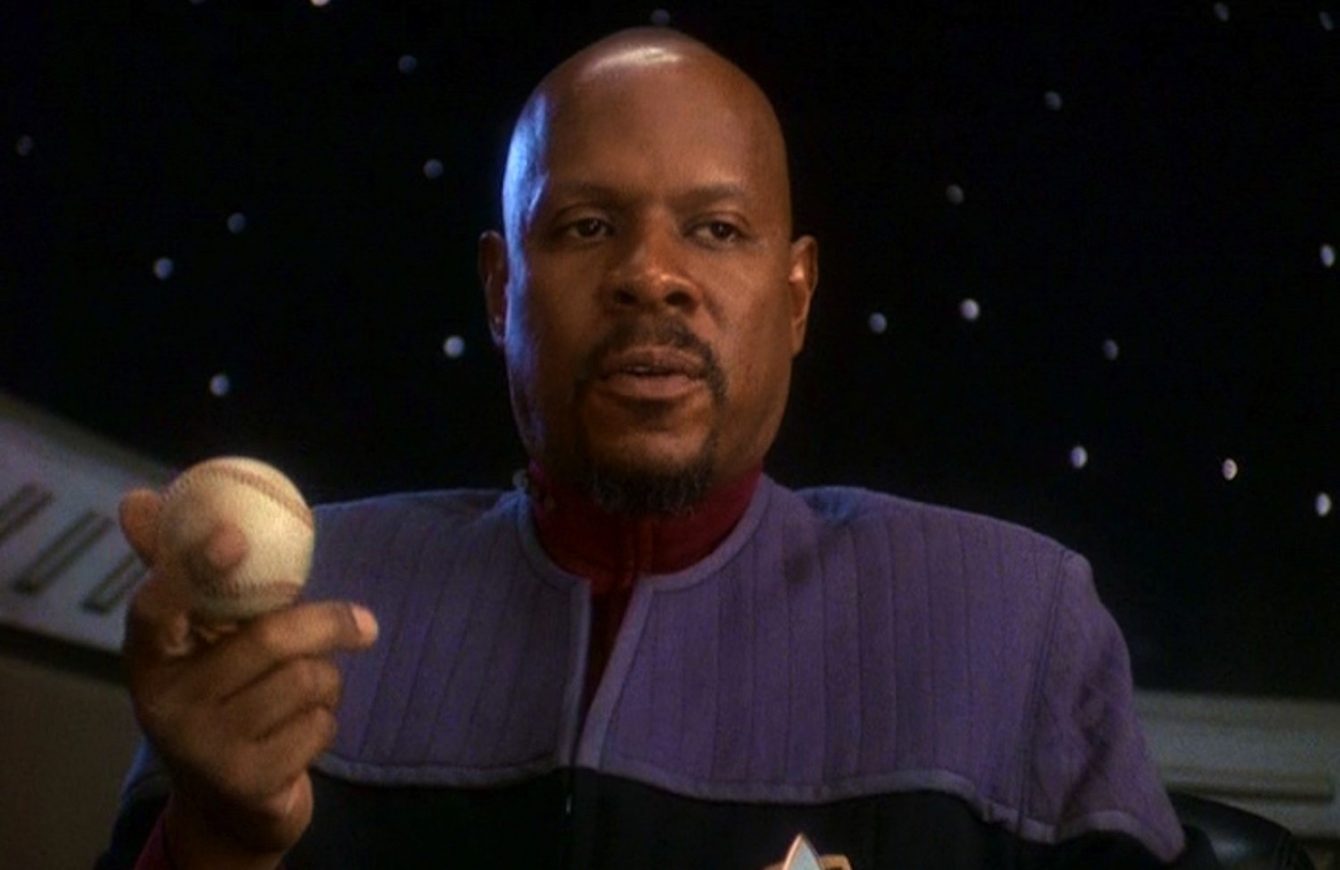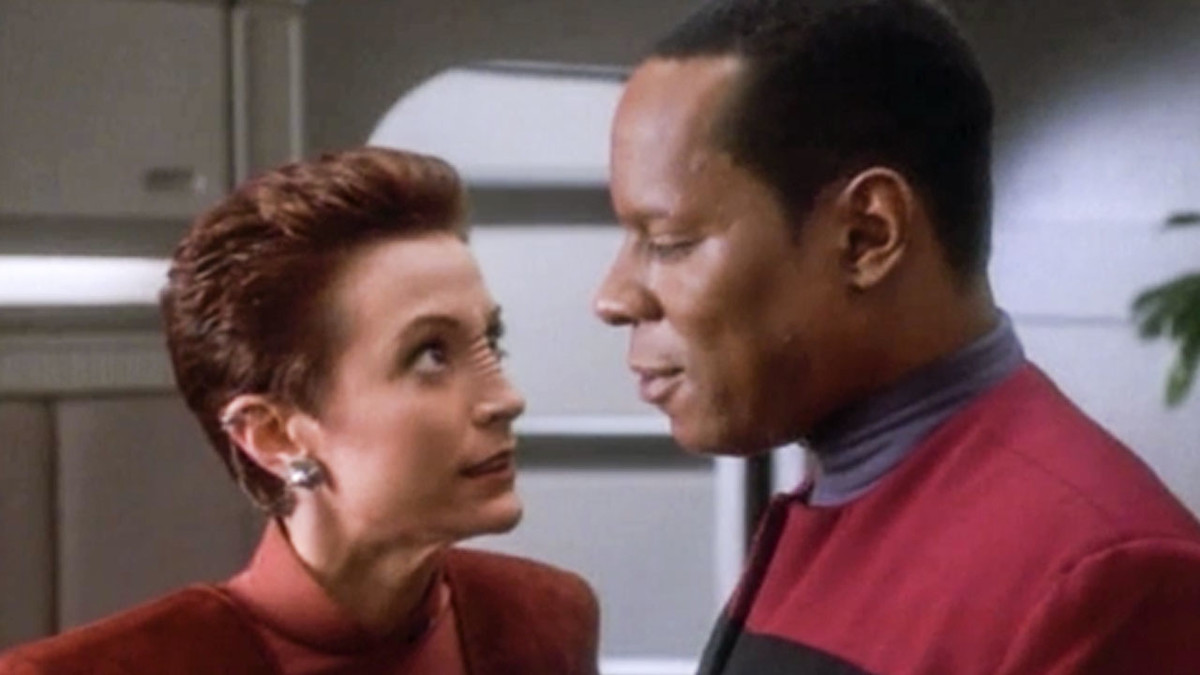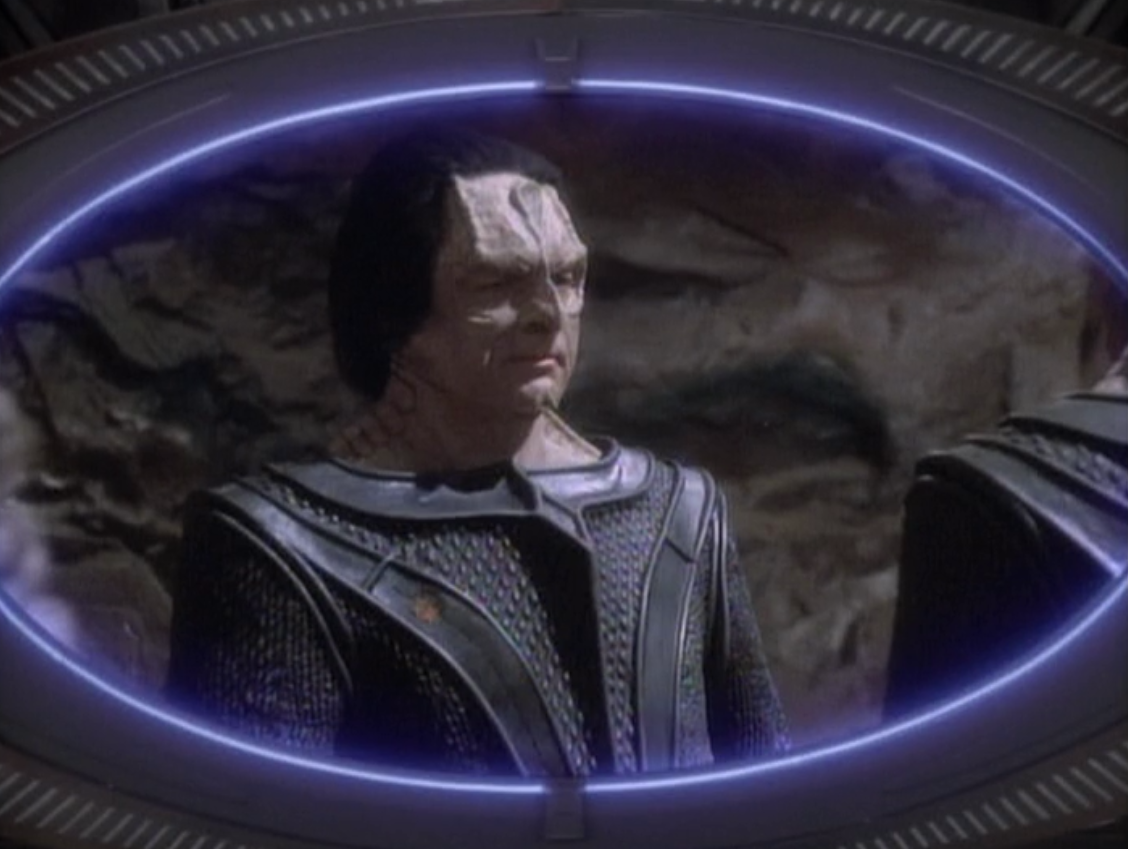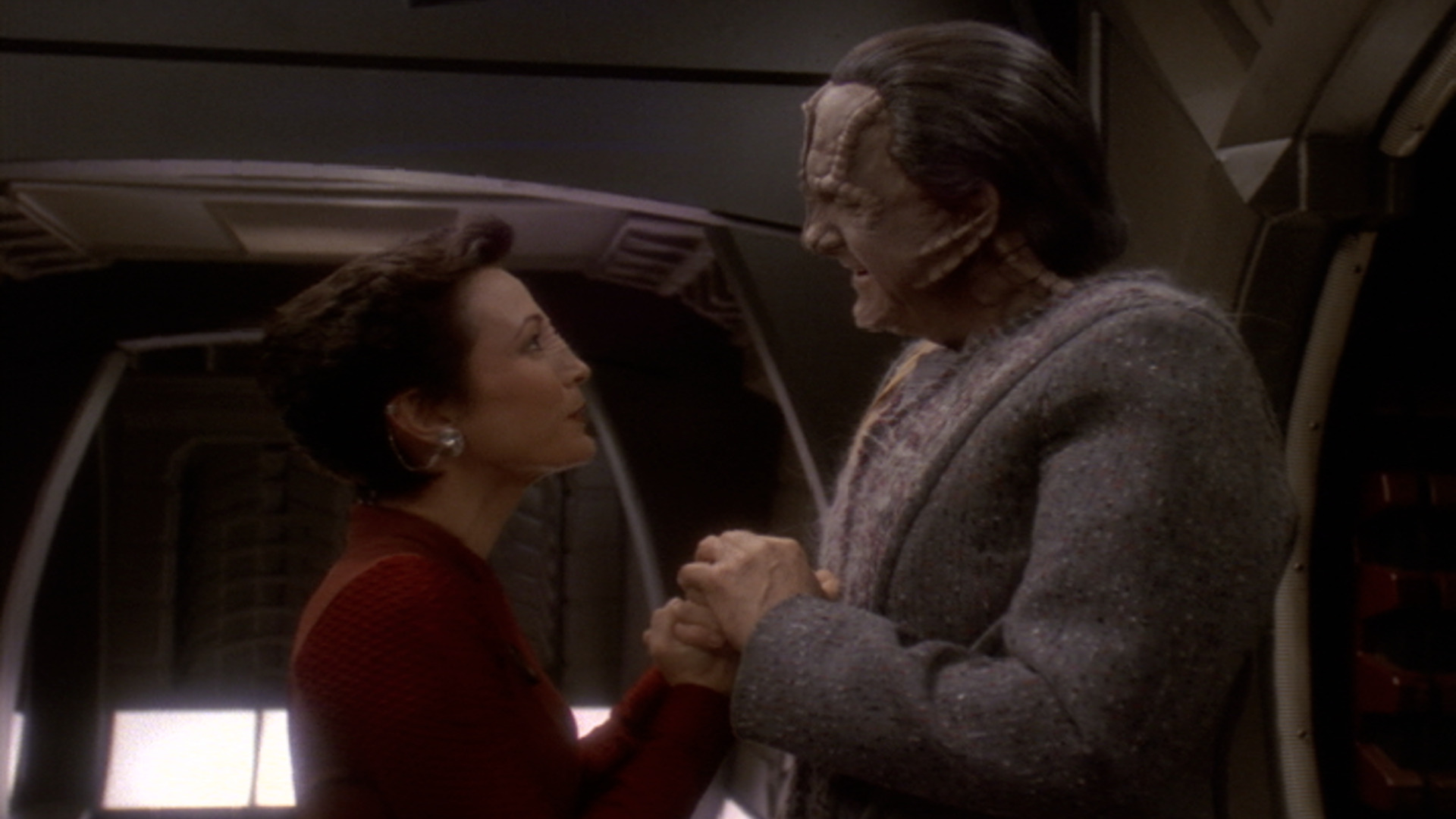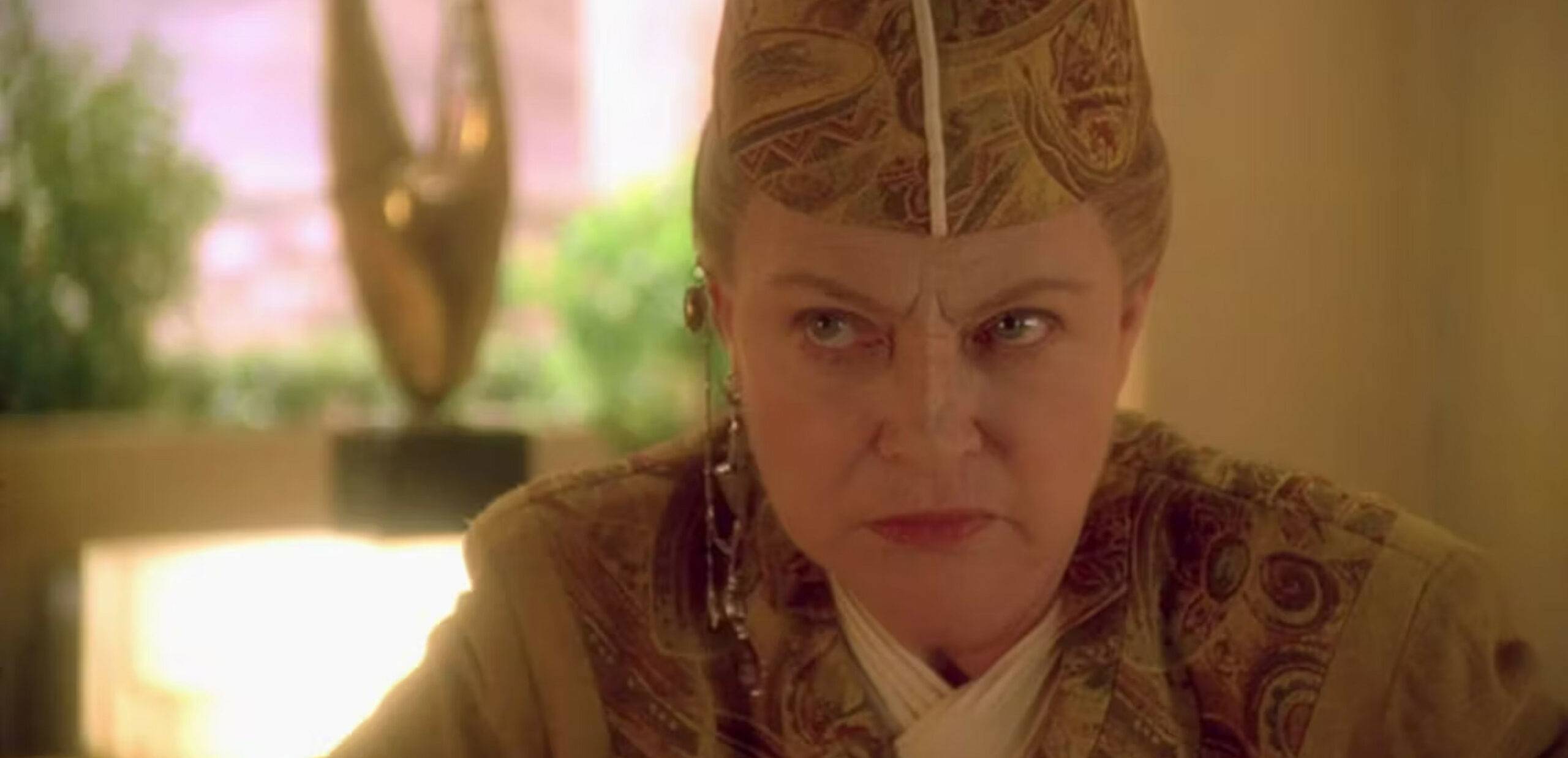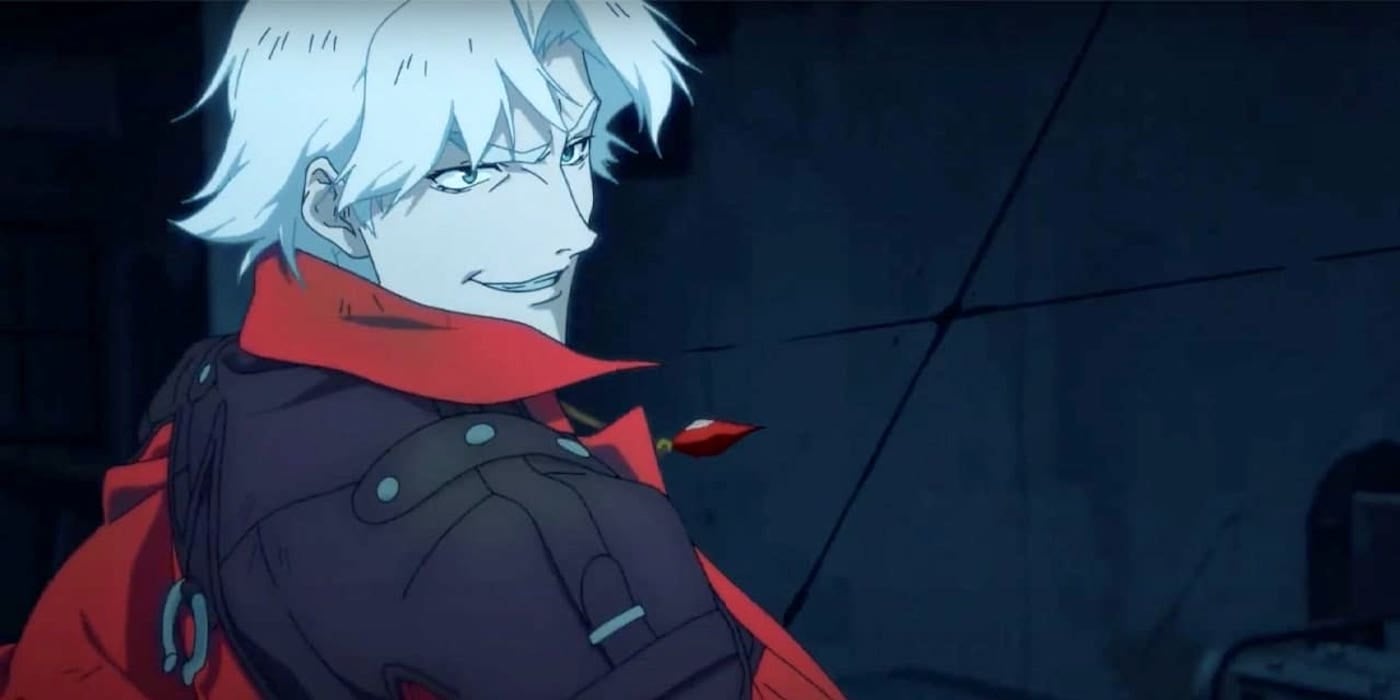‘Star Trek: Deep Space Nine,’ “Duet,” and the Fight For Restorative Justice
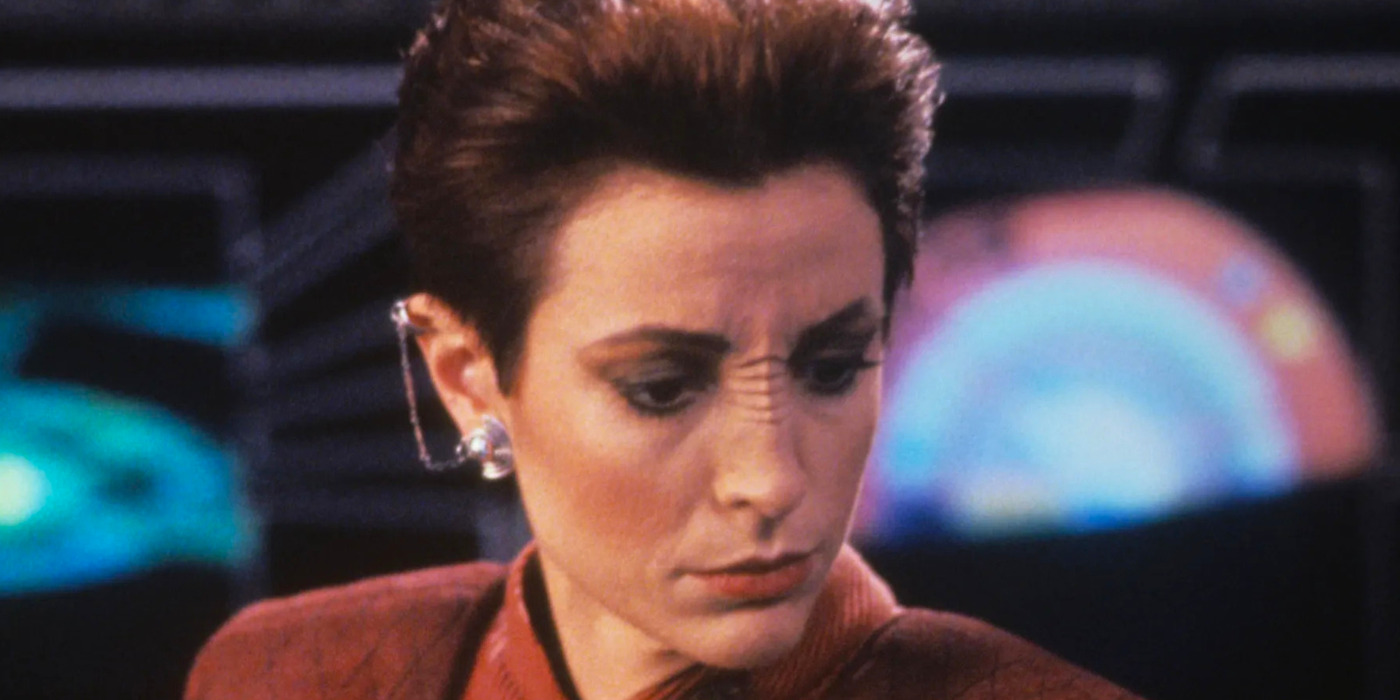
Star Trek: Deep Space Nine is forever the most relevant series in the franchise. And no episode exemplifies the reason why better than “Duet”.
Rarely can you say with certainty that an episode of television will stand the test of time. Sometimes you may be certain that a story will only be a humorous footnote only for it to become depressingly relevant.
There are, however, occasions where you know from the moment of transmission that a story will live on forever. “Duet” is one such story. Two representatives, each from one side of an horrific campaign, face each other after the initial conflict is over. They argue about many things, but their present conflict boils down to one question: what is justice in the face of absolute suffering?
Kira Nerys is a former freedom fighter struggling to rebuild her world of Bajor after a genocidal occupation by the Cardassians. Aamin Marritza is a Cardassian who played a part in those atrocities. Both of them make impossible and, at times, terrible choices. Neither can heal from the occupation. And neither of their worlds can heal either. But maybe if these two enemies work together, a path toward healing is possible.
“Duet” is a story about the importance of acknowledging guilt. It’s also about the power of coming together to seek something bigger than an eye for an eye. It’s about restorative justice, how difficult that is to obtain, but also how necessary it is in helping people do more than simply survive.
Sisko and Political Posturing
When Aamin Marritza comes aboard Deep Space Nine it is clear straight away to Major Kira that he worked at the Gallitep labor camp. There, the Cardassians enslaved, tortured, and killed countless Bajorans.
Marritza denies the claim. However, he has Kalla-Nohra Syndrome, a condition that only people who were at Gallitep at the time have. The evidence is strong enough that Commander Benjamin Sisko arrests Marritza on suspicion.
Sisko is part of Starfleet. He is human, not Bajoran or Cardassian. He is an outsider in these affairs. And so it comes to Sisko to try to view the evidence objectively in order to decide how best to deal with Marritza.
However, Sisko is besieged on both sides by representatives from Cardassia Prime and Bajor, pressuring him to act not in the interest of facts, but for their respective political interests.
Gul Dukat represents Cardassia Prime and wants Marritza released. Dukat wishes to prevent Cardassia from facing further consequences for occupying Bajor. But Dukat, who oversaw that occupation, is also protecting his own personal interests and power.
Minister Kaval meanwhile wants Marritza brought to Bajor to face charges. And while I have no doubt that Kaval wants justice, he is also one of many leaders in Bajor’s provisional government posturing for power. If Kaval brings a criminal from Gallitep to justice, his power and influence will grow exponentially.
Sisko knows there are risks to him, to Deep Space Nine, and to the Federation if he does factor these two men’s demands into his decision. It’s a situation leaders in the real world face every day. And Sisko handles it by gambling on trusting neither Dukat nor Kaval, but by trusting someone else entirely.
Sisko, Kira, and Shared Guilt
It’s easy to mistake Kira Nerys for a chaotic loose cannon. Certainly, Sisko has cause to see her that way. Kira, hot-headed, isn’t shy about going over Sisko’s head. And in point of fact, Kira is the person who reaches out to Minister Kaval in the first place.
However, Sisko understands Kira. They have something in common–they are both survivors. When the Borg wipes out an entire Starfleet armada at the Battle of Wolf 359, Sisko is one of the few officers who escapes. That battle claims countless lives, including Sisko’s wife Jennifer. The entire pilot episode of Star Trek: Deep Space Nine is about how a part of Sisko will always live in that moment of absolute grief.
And Kira lives inside her own grief and her own survivor’s guilt. She helped liberate the prisoners at Gallitep, but so many people suffered and died before she did. Kira also struggles because, as a freedom fighter, she killed a lot of Cardassians, some of whom were innocent civilians.
Sisko initially wants Odo to handle Marritza’s investigation. But Kira begs Sisko to let her do it. And the reason Sisko honors Kira’s request is because she is nothing like Dukat or Kaval. Kira may want to escape her own despair and guilt, but she wants Bajor to heal more. That is the core motivation that defines all her choices.
Sisko understands something many people in power today do not: when a group of people are brought to suffer on a systemic level, representatives from that group must be directly involved in seeking justice for that suffering.
But it’s much deeper than that.
A Humble File Clerk and the Butcher of Gallitep
Aamin Marritza is maybe the most complex single-episode character in Star Trek history. Certainly, he is the most complex one in the history of Star Trek: Deep Space Nine. He is a file clerk who worked at Gallitep directly under the leadership of Gul Darhe’el–the man most responsible for the atrocities in the labor camp. Marritza is a coward who takes no action during the occupation save to hold his ears at night to muffle the sound of screaming Bajorans.
And yet, Marritza is also someone who goes to great lengths to impersonate Darhe’el and to be captured on Deep Space Nine specifically. There can be cowardice in seeking escape from guilt through death, but there’s more to Marritza than self-guilt. Marritza knows that neither Bajor nor Cardassia can heal unless Cardassia admits to the atrocities and seeks to truly repair the damage done to Bajor.
Marrtiza goads Kira into hating him by falsely reveling in Bajoran suffering. But Marritza also genuinely resents Kira. Part of him is jealous that she is brave whereas he is a coward. But he also hates that Kira killed innocent Cardassians.
However, like Kira, Marritza is not driven primarily by hate or political agenda, but because he fears a world without justice. He thinks that punitive justice is the only path forward. However, it is Kira who sees a better way.
Restorative Justice for the Oppressor and the Oppressed
Once Kira knows the truth of Marritza’s identity, she offers her hand to him. He is a criminal, yes. To put it in real-world parlance, a Nazi who is just a file clerk is still a Nazi. But Kira sees that Marritza de can do something much greater than die. He can publicly speak out against the Cardassian occupation of Bajor. To do so opens the door for a free Bajor in the long term, not just the short. It makes it possible for reparations to be paid by Cardassia to Bajor.
And the power of restorative justice is that it offers long-term freedom for the Cardassians as well. No society can hide from its own injustice. To do so only begets more atrocities, against other worlds and inevitably against Cardassia itself.
But it is not to be. In the end, a random Bajoran kills Marritza on the promenade in cold blood. He’s Cardassian–isn’t that reason enough? And after years of believing exactly that, Kira realizes she was wrong. In fact, Marritza’s death is a massive loss. He was a good man. But more than that, Marritza represented a path forward for Bajor that Kira never dared dream of.
At that moment, Kira fears that the dream will die with him. And that fear is not misplaced.
The Aftermath of “Duet”
“Duet” is the penultimate episode of Star Trek: Deep Space Nine season one. Its season finale “In the Hands of the Prophets” immediately shows the dangers Bajor faces due to fear of a new occupation–be that by Cardassia or the Federation. We’ll return to that episode in greater detail next time.
However, Bajor struggles immensely in the aftermath of Marritza’s death. The Circle, a Bajoran terrorist organization headed by Minister Jaro, begins attacking Deep Space Nine and any non-Bajoran people residing on Bajor. These actions led to a Bajor fighting violently not only against the Federation but against themselves.
These actions lead to the power-hungry Vedek Winn being appointed the new Kai, the Bajoran’s spiritual leader. And she repeatedly guides many Bajorans down dangerous and fruitless paths.
Meanwhile, Cardassia continues to lose allyship in the quadrant. And that leads them to ally themselves with the Dominion. Those “allies” eventually occupy Cardassia Prime, bringing out the suffering and deaths of countless Cardassians.
What if Marritza had lived? The potential of his public works is something we cannot know. But it is possible that he and Kira together could have averted at least some of the tragedies to come. Undoubtedly restorative justice is the better path, the one most likely to lead to mutual healing while keeping out posturing politicians and religious zealots who seek personal gain over public good.

